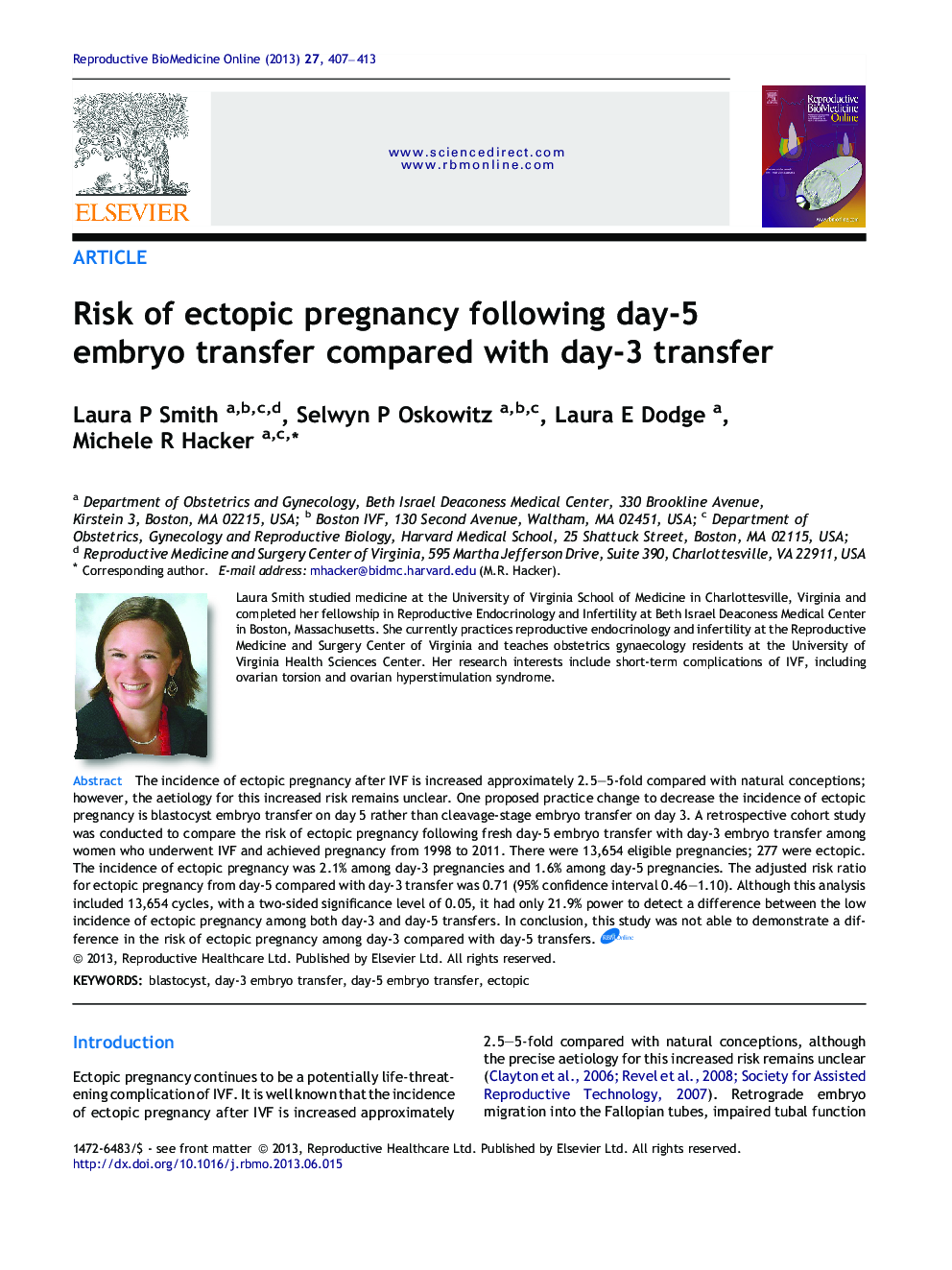| Article ID | Journal | Published Year | Pages | File Type |
|---|---|---|---|---|
| 3970247 | Reproductive BioMedicine Online | 2013 | 7 Pages |
The incidence of ectopic pregnancy after IVF is increased approximately 2.5–5-fold compared with natural conceptions; however, the aetiology for this increased risk remains unclear. One proposed practice change to decrease the incidence of ectopic pregnancy is blastocyst embryo transfer on day 5 rather than cleavage-stage embryo transfer on day 3. A retrospective cohort study was conducted to compare the risk of ectopic pregnancy following fresh day-5 embryo transfer with day-3 embryo transfer among women who underwent IVF and achieved pregnancy from 1998 to 2011. There were 13,654 eligible pregnancies; 277 were ectopic. The incidence of ectopic pregnancy was 2.1% among day-3 pregnancies and 1.6% among day-5 pregnancies. The adjusted risk ratio for ectopic pregnancy from day-5 compared with day-3 transfer was 0.71 (95% confidence interval 0.46–1.10). Although this analysis included 13,654 cycles, with a two-sided significance level of 0.05, it had only 21.9% power to detect a difference between the low incidence of ectopic pregnancy among both day-3 and day-5 transfers. In conclusion, this study was not able to demonstrate a difference in the risk of ectopic pregnancy among day-3 compared with day-5 transfers.
